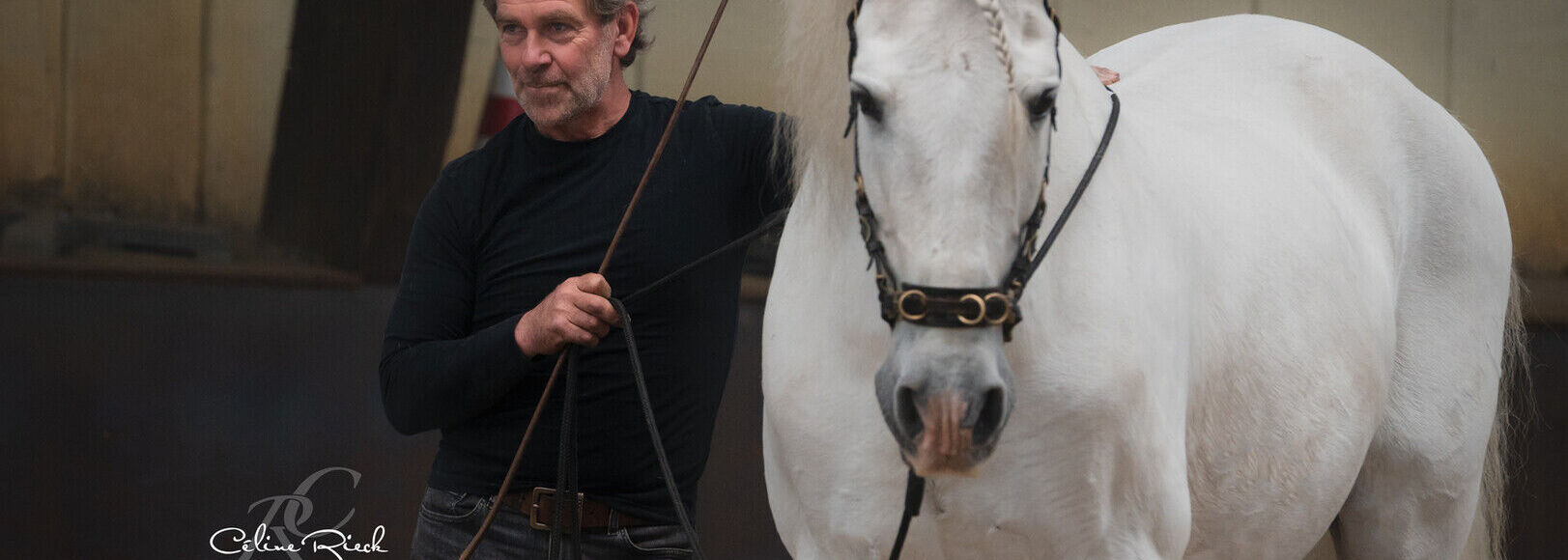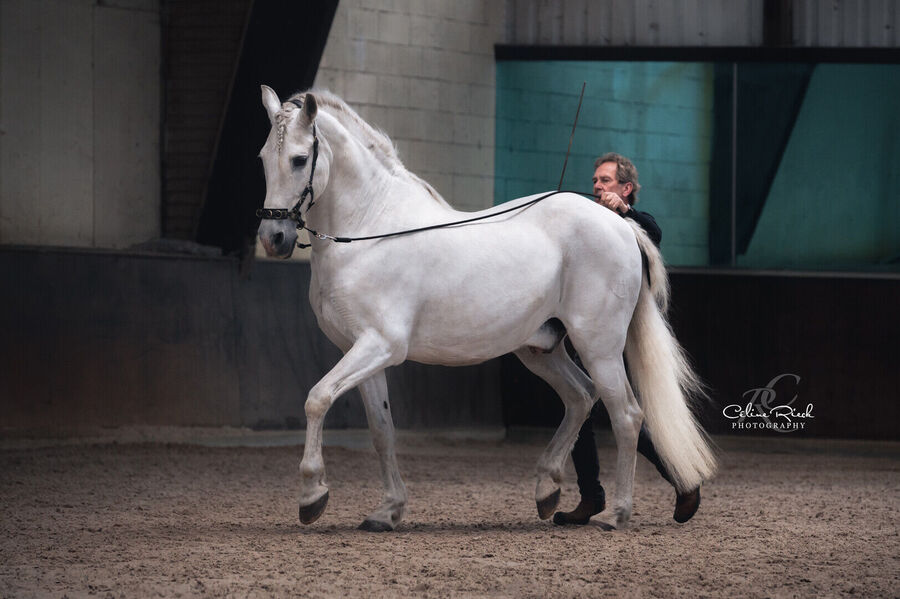Within Equitation there is a Training scale with important elements on the way to collection. These elements vary from trainer to trainer. Here are the important elements to work with in the Bitless Art of Riding, which we clarify in this Academy.
Relaxation and Rhythm: Our first task is always to ensure mental and physical relaxation. Only when the horse is relaxed can we develop rhythm in the horse. Rhythm and relaxation are interconnected.
Balance: Balance allows the proud horse to control its body in movement.
Impulse: Impulse is the transmission of an energetic but controlled propulsive energy generated from the hindquarters.
Contact: Contact is the feeling of connection between the rider's hands and the horse's head (soft poll).
Straightness: A horse is not naturally straight. The horse shows its asymmetry.
Lightness: Lightness is the result of suppleness in balance.
Self-Carriage: The horse carries out the required movement without the constant assistance of the rider.
Willingness and Control: Willingness in equitation is much more than just obedience. It is the quality we find in a horse that is always ready and willing to respond to the rider's aids because it associates them with feeling. The willing horse gives you control because it is gained gradually within a systematic structure. The horse understands the aids and can carry them out.
Collection: is a perfect balance between these elements. The true and ultimate goal of equitation.


